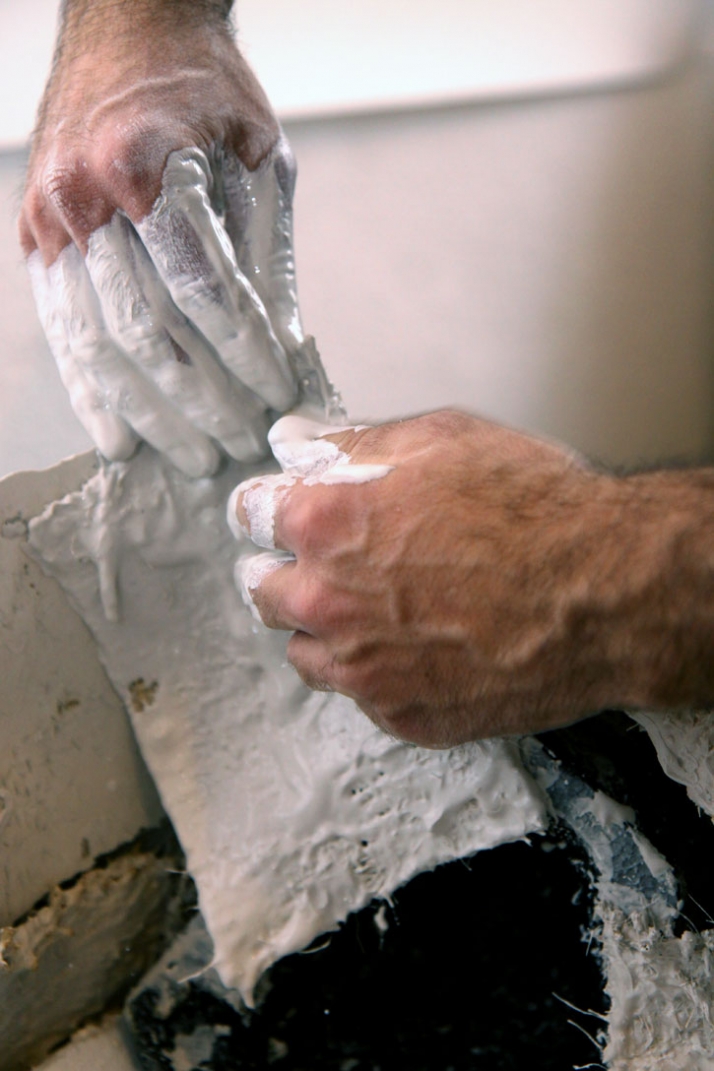photo © John Drandakis for Yatzer.com // All rights reserved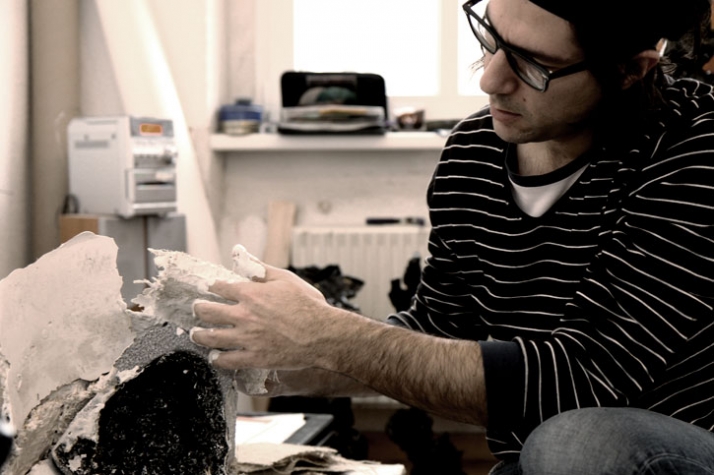
We think is about time you travel to Berlin to meet on of the most talented Greek artists, Konstantino Dregos. His sculptures, although not always easy to define, are surprisingly inspiring and at the same time they challenge our perception of the beautiful. Often what is implied in his work is stronger than what you see at first glance and this is quite challenging. Dregos is a restless spirit and is very probable to find him studying at the local library. With a deep love for mythology and natural history, he approaches the modern world in a very organic way and tries to open a dialogue between nature and culture. Nevertheless, it is the strange darkness hidden behind his sculptures what is the most notable thing about his work, a darkness that is difficult to digest but easy to fall in love with. We practically interrogated him and he didn’t have more options other than revealing the basic concepts behind his art, his inspirations, the reasons he moved to Berlin and all of his obsessions to Yatzer.
photo © John Drandakis for Yatzer.com // All rights reserved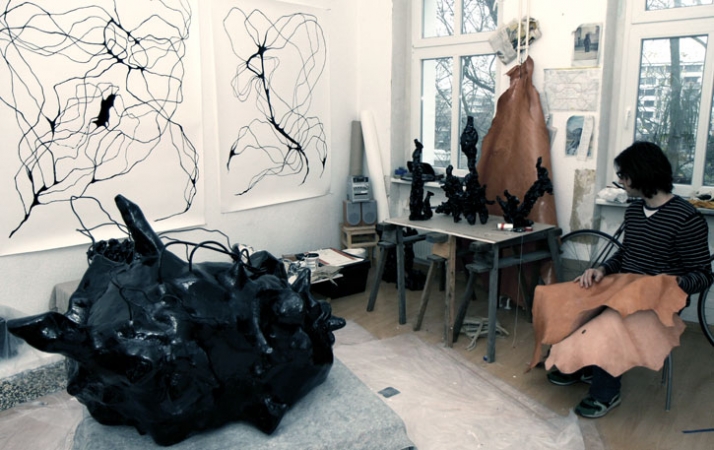
Konstantino, how did your fascination with sculpture start?
I don’t believe in fate and destiny or at least not in advance and a-priori, but I believe that a particular summertime in Greece in ancient Olympia when I was still a small child meant to be crucial for my involvement with the arts and more specifically with sculpture. Thus it constitutes “the day one” for what followed in my life and, through a lot of changes and internal confrontations as well as through curious situations, it acted jointly into becoming my own frame in life. Also this first contact with such a well kept ancient culture as the Greek one made me wonder for the role of art as an imitation of nature. I could see something completely different than my parents or others could see. In the statues they saw human looking gods full of beauty and harmony and so on…in my case I saw something totally unnatural…This was my first, let’s say, revealing moment of my childhood which provoked, still in the “early” days, a labyrinth wise query regarding the work of art in its substance as fabrication, something totally unnatural in its own substance. That was what triggered me into arts. This so called gap between Nature and Culture and the effort to bring these two worlds closer to each other or even to fuse them together became the major task in my work and the best way to do so was sculpting, drawing and painting.
photo © John Drandakis for Yatzer.com // All rights reserved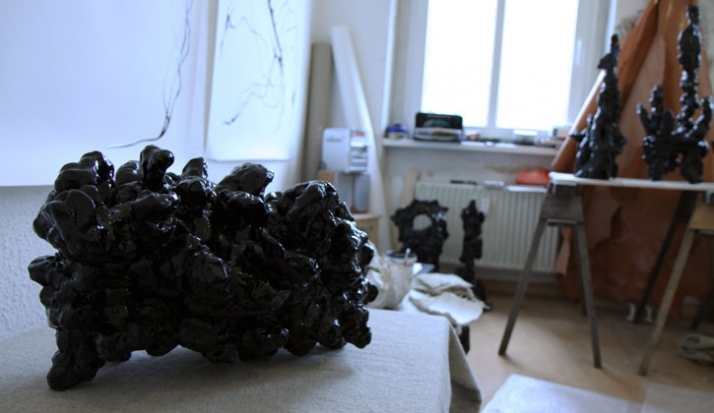
Your sculptures are dark and some people may even find them annoying. Their shape and their texture give the impression that they have survived out of a fire. Are your creations the remains of an emotional disaster?
Well…this is what someone might say when he sees my work at first glance. But I have to say that something new is by its own nature often annoying because it forces us to think from the beginning about things which we consider as certain … and that is something we don’t usually do with such a great eagerness… There is not only one way to perceive what is called “beautiful” - if that’s the question in art. “Beauty” has innumerable aspects, and above all is not prescribed and cannot be prescribed by academies, Wall Street brokers and trends …that’s the beauty of art!!! As I said before, my labor platform includes perhaps the most bellicose dualism in the history of human kind which runs through the whole human activity and shapes the world in all its majesty. That is “nature and culture”.
This timeless fight between those two, a concur of nature on culture and vice versa, aiming since the begging of time to point a winner, is a war whose losses and ruins we start to grasp faster and faster. And no I am not referring to a personal emotional disaster, not directly, but to all of those things that come out of the conflict between nature and culture. I am referring more to the cause and not to the result.
photo © John Drandakis for Yatzer.com // All rights reserved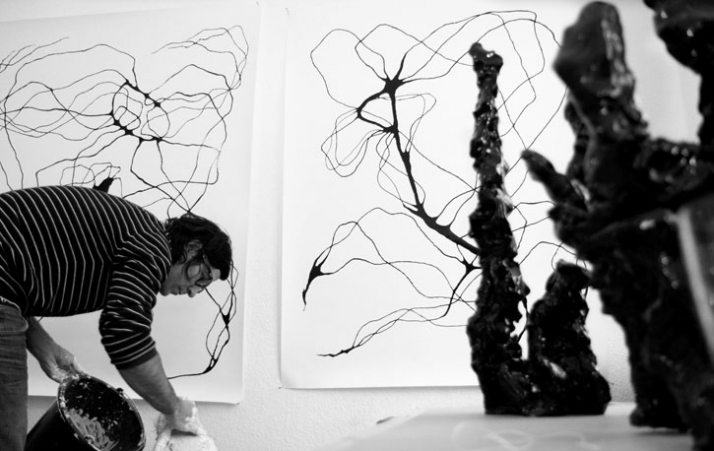
| What are the materials that you are using? How did you manage your human heads to look so real? The materials that I use are acrylic mass with bitumen in combination with epoxy accelerator and of course animal skin. The vividness of the figurative content of my creations is a result of classical studies in sculpture. My sculptures are totally made up; in that sense they don’t let real persons to be seen in them. They are traditionally molded in clay, casted in Propylenium and then worked on further with animal skin. |
photo © John Drandakis for Yatzer.com // All rights reserved |
photo © John Drandakis for Yatzer.com // All rights reserved
photo © John Drandakis for Yatzer.com // All rights reserved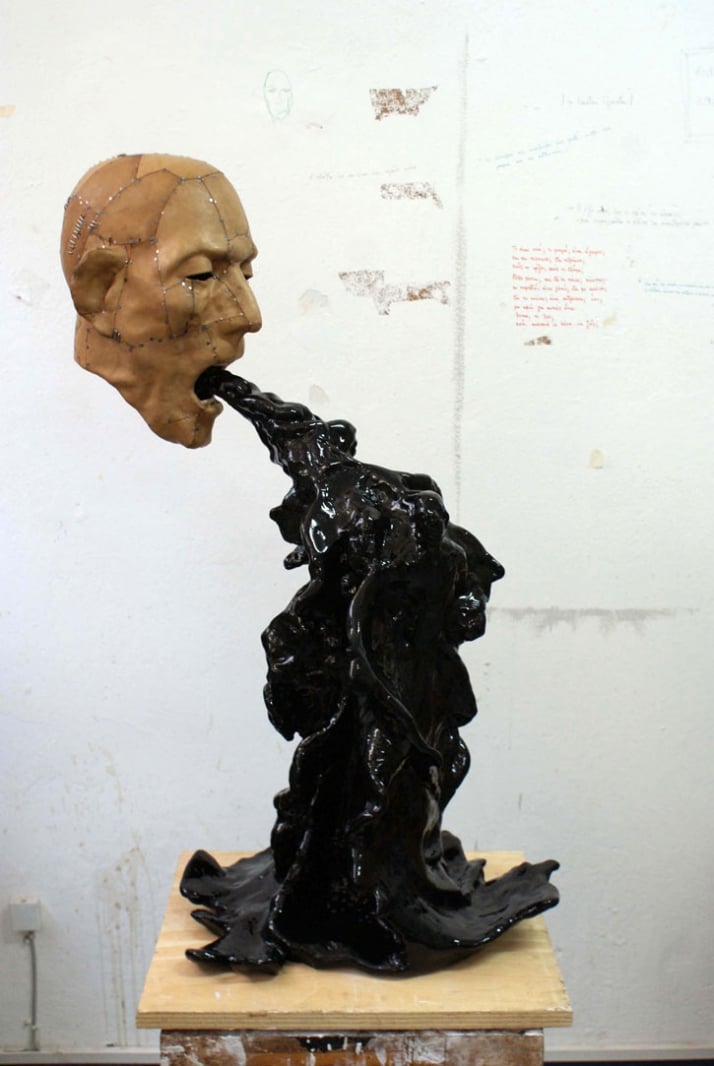
A friend of mine says that after vomiting all the blackness we have inside, we transform into new persons. This is exactly what I saw in one of our sculptures. What is the effect creation has on you?
Ah yes! You are talking about “Kronos 2009” isn't it? Well...for this piece it is somehow necessary to make some kind of introduction… I must say that this sculpture is an inversion of the Myth of Kronos based on the painting of Goya in 1781. Kronos, the famous Titan that engorges his children, rhymes in Greek with the word "chronos" that means "time". In the case of “Kronos 2009”, he is vomiting his children because in 2009 he doesn’t need them anymore… this vomiting declares the time overturn which happened in the last 50 years, this big change in our notion of time, from the private time of yesterday…to the world time of today. Now as an answer to your question of the effect of creation on me, I would put it all in one word…it is cleansing, or even cathartic. That’s the only way that my work can stay true and consequent to what it serves and to connect itself with others.
photo © John Drandakis for Yatzer.com // All rights reserved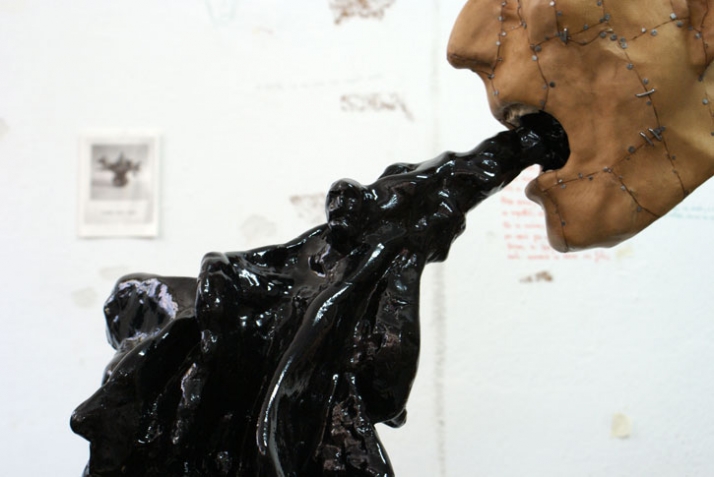
photo © John Drandakis for Yatzer.com // All rights reserved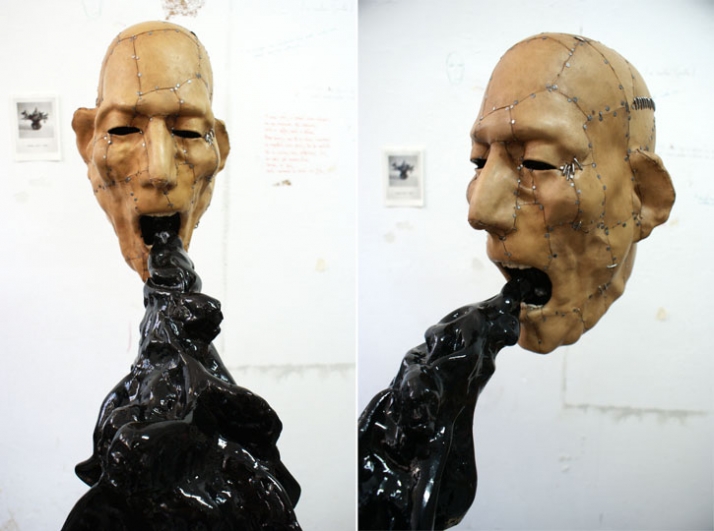
From where do you get your inspirations? Is there any specific story hidden behind every piece or a concept that unites them?
Well, my inspiration sources are rather banal…I mean, I go for a walk in the park or around my neighborhood and observe flowers and plants, I collect photos from newspapers, books and magazines of things that seem to be interesting to me and generally my inspiration comes from life. I also have a small voice recorder almost always in my pocket and when I have an idea or a thought I simply press the rec. button and talk to myself. Sometimes it’s quite confusing because I lose my truck... My studio is always in a total mess and that plays also a role in how some ideas develop…I mean I make a drawing or I note an Idea on a piece of paper then I put it somewhere in this chaos of mine and it doesn’t hold long till it gets lost and maybe months later rediscovered. That’s sometimes a bit bothering but it can be also very surprising. I draw a lot and in a quite unusual way. Due to that, visual solutions rise that are beyond any control and thereby possibly point every time in a new direction. In my work I attempt to undergo the process of reality translated into visual schemes. In its reverse direction I find myself building flowers, seeds and blossoms out of leather and tar. The concept that unites them is the dipole “nature and culture”.
photo © John Drandakis for Yatzer.com // All rights reserved
You have been living and working in Berlin for the last years. What is so special about this city that has made a lot of artists to seek the rather artistic paradise? And which part of Greece is present in your work?
As an artist if there is anything I can say about Berlin’s uniqueness is that it offers a pretty different way of life in comparison to other big cities of the world. Here you get to know thousands of people from all around the world and each and everyone of them says to you how different is his life here than in his own country. For me it is the “place to be” for several reasons. The thing is that the city provides to me a rather cheap way of life and an infrastructure regarding to arts which is amazingly wide and insanely deep. There are over 40 inaugurations a day, you have free entrance in museums and in famous collections, you get invited to parties on a daily basis, as an artist you get support for studios and exhibitions from the state, you have a number of other facilities which promote every kind of art and, most importantly, you get to know people who left their countries in order to be a part of the dream. That is sometimes a bit hard to keep up with…you know…it’s too good to be true sometimes… (just kidding!). Plus, I believe that what makes Berlin such a unique place is not the sightseeing and definitely not the luxury, but a wide and deep sense of tolerance in the society. It is the city that joins the west with the east although without managing not even today to decide if it is west or east…!!! Funny isn’t it? This active humanistic constellation tries still to clear the differences away and to bring east mentality and west mentality closer. This “think wise” is wide spread and has of course further social extensions such as tolerance of homosexuality and of any other kind of “different” mentality… That’s nevertheless a pretty transvestite situation that is very interesting and reaches a remarkable cultural depth. This tolerance is what releases creativity, pushes back introversion and keeps in this way the things alive. This everyday routine in Berlin, where “anything goes” and the east-west issue is visible, constitutes the absolute condition for me as an artist today.
photo © Konstantino Dregos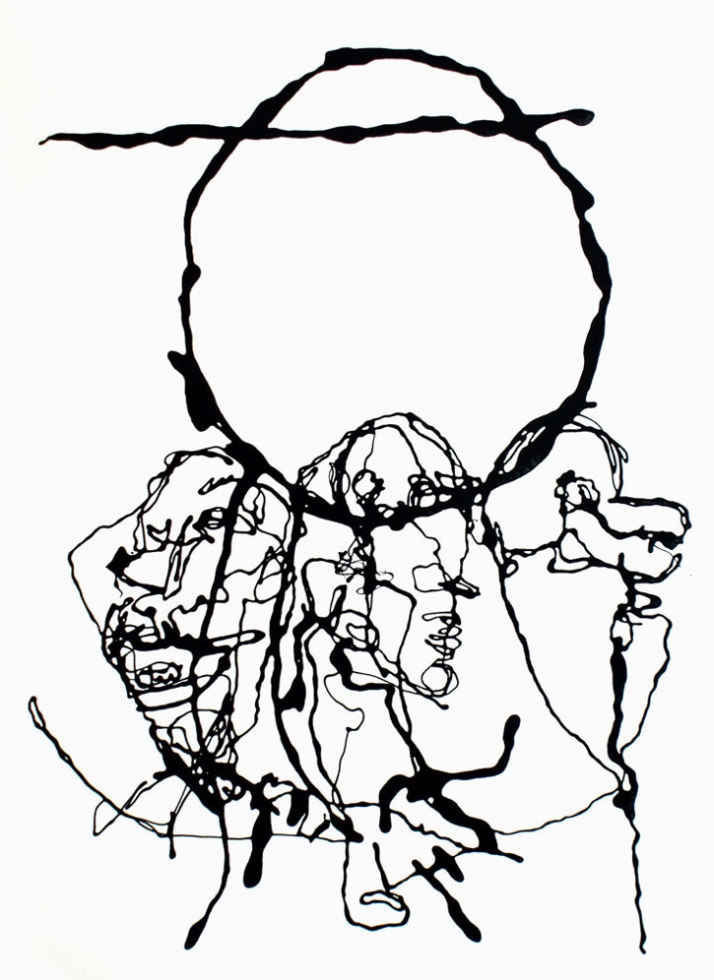
photo © John Drandakis for Yatzer.com // All rights reserved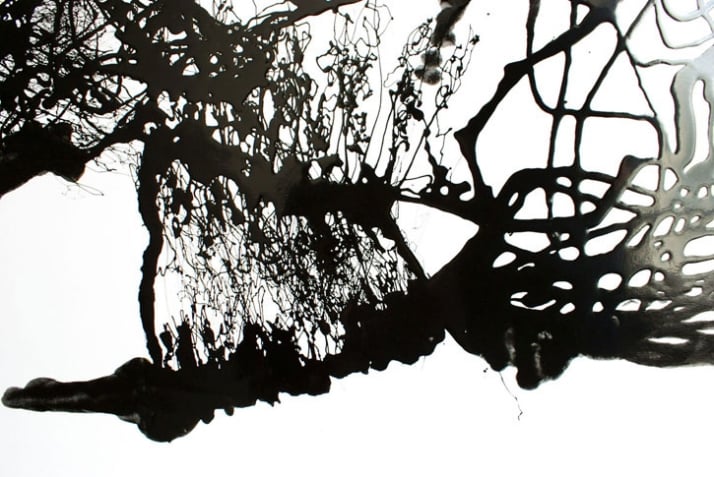
You have mentioned that the concept of time and its effect on our lives, either transforming or devastating, has influenced your art. Can you explain us in which way?
If you remember, Ruinventions Project placed under contestation the general perception of historical flow and doubted the nature of the so called chronological continuous after it showed its fragmental character causing simultaneously an explanatory hang on the significance of time history. This led to two and only explanatory disciplines.
According to the first, the ruin it is left to be interpreted as a splinter of destruction or collapse, remnant of a thing that sometimes existed, while according to the second the ruin is interpreted in contrary to the first, as a blooming idea. This “blooming” that sprang out of the abdomen of this prehistoric discovery in the “Ruinventions” installation gave a new orbit in my creations leading me to re-examine questions that concern my work, in its entirety, from a new thematic viewpoint, maintaining, however, in its core my thematic body up to now. The fragmental character of time shows its structural notion as an instrument. An instrument is an instrument because of its ability to be deconstructed. To construct though it means to be able to see pieces that join together, it means to be able to create. After all, in the core of each creative action lays the action of deconstruction. What does it mean, however, to perceive the world as a pile of ruins/splinters? Above all it means to deconstruct what we all call “real'', that is to say you become more powerful than the real facts. With a few words, you do not allow yourself to become victim of the “mythology of the ordinary”', a beggar of facts. The creative action is undeniably an action of thought and vice versa. The thought is determined by its ability to deconstruct the real. The problem, however with the “real”, like the idea of time, is that it doesn´t only correspond to one and only picture. The power of the “real” springs out of its claim between the “yes” and “no” of the creative disposal. What changes the substance of time today is the relation that we have with it.
photo © John Drandakis for Yatzer.com // All rights reserved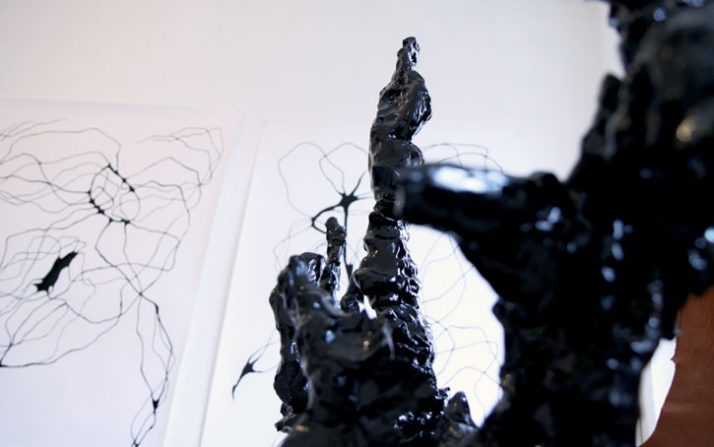
What is the working process that you follow? Can you describe as a typical day of yours?
Yeah, well listen…, I try to wake up early in the morning in order to have clear mind and I write down the thoughts that I made concerning my work the previous day. Certain thoughts and ideas remain and others not. In this way it is clarified the landscape of thoughts and doubts in a big extent and so I know which are the thoughts and the ideas that concern my work. Later I will start working. I don’t make only one piece all at once but maybe 2 or 3 at the same time. This happens in order to keep the things on the edge. I make preliminary drafts and examine from early on the dimensions that a piece should have. As soon as I see that what I do is vague and not 100% defined, I go to the library and start to research issues that have to do with my work or I simply play ping pong… That will help me to recover my rhythm. At the moment I read a lot about the birth of the universe and the first fauna & flora on earth. In the late afternoon as soon as I finish with my work I go swimming to the swimming pool here in my neighborhood and then I meet friends in a pub which is for us a kind of a think tank procedure. Oh yes!! And I play a lot of ping pong…. it’s a big weakness man!!
photo © Konstantino Dregos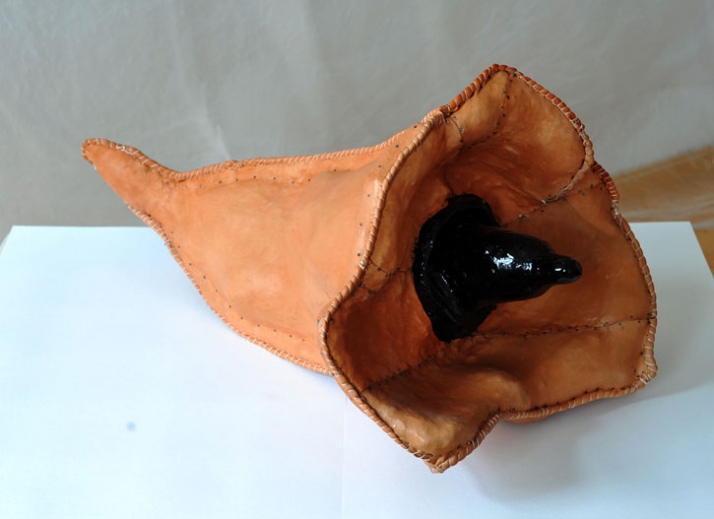
What are you currently working on and which are your future plans?
Right now I am working on a new series of work with the name “time blooms” which has the same morphological frame with my previous work. I am preparing some projects which will run here in Berlin but also in Athens and at the same time I am trying to put some things in the right order to pitch some shows. On May I will be in Greece with a project for Art-Athena entitled “from far away nearby”, based on my prehistoric flowers concept. I can’t say more about it but am pretty much excited for what is about to follow!
photo © Konstantino Dregos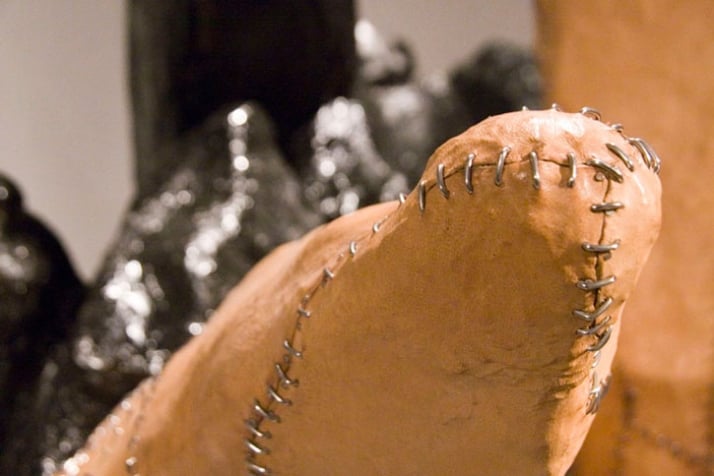
photo © Konstantino Dregos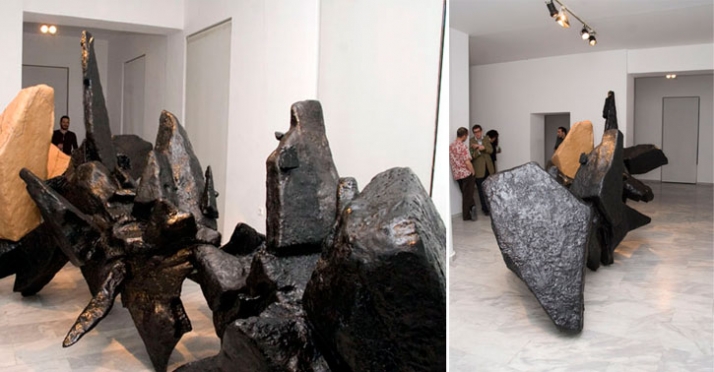
photo © Konstantino Dregos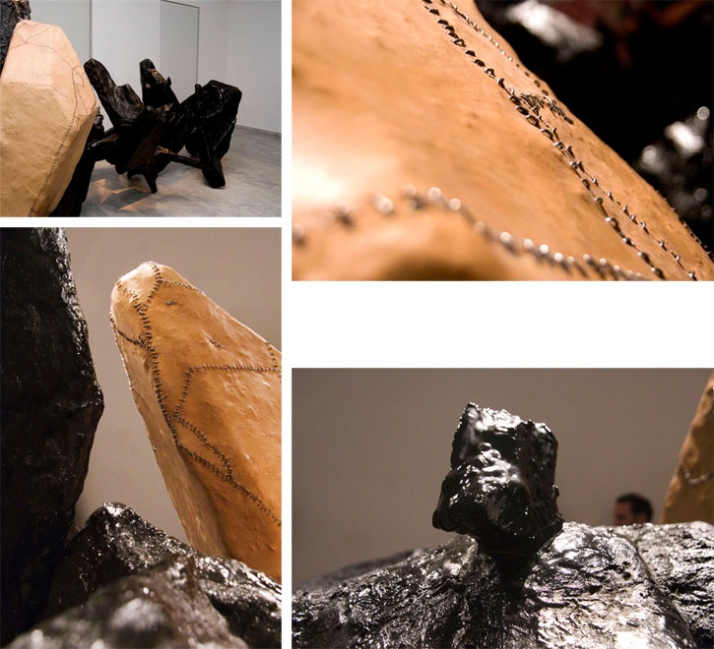
Recent Articles

Bellevigne Hotel Taps into Burgundy's Rich Winegrowing Heritage









